LIDOCAINE/PRILOCAINE CREAM - TOPICAL
PHONETIC PRONUNCIATION: (LYE-doe-kane/PRILL-oh-cane)
COMMON BRAND NAME(S): EMLA
GENERIC NAME(S): lidocaine/prilocaine
Uses
USES: This medication contains 2 amide-type local anesthetics, lidocaine and prilocaine. It is used on normal, unbroken skin or on the outer genital area to prevent pain before certain procedures such as inserting a needle, skin grafts, or skin laser surgery. It works by temporarily numbing the skin and surrounding area. Do not use this product in the ears. If this product alone cannot completely numb the area being treated, it may be used to numb the area before a lidocaine injection is given to provide enough pain relief for certain procedures (e.g., removal of genital warts).
How to use LIDOCAINE/PRILOCAINE CREAM - TOPICAL
HOW TO USE: This medicine comes with a Patient Information Leaflet. Read it carefully for instructions on how to use this product. Ask your doctor, nurse, or pharmacist any questions that you may have about this medicine. Use this medication only on normal skin and the genital area. Do not apply to broken/irritated skin or open wounds unless directed by your doctor. Wash your hands before using this product. Apply this product to the area at the proper time as directed. The length of time for the medication to stay on the skin depends on the type of procedure you are having. It is usually applied at least 1 hour before needle sticks and 2 hours before minor skin procedures. It may be applied by a health care professional before certain genital procedures. In this case, it is recommended that you remain lying down so the medication will stay in place. To apply, squeeze out the prescribed amount of cream directly onto the skin. You can also squeeze it onto a measuring guide to make sure you get the right dose and then apply it to the area. Do not rub in. Cover with an airtight dressing/bandage as directed by your doctor. Allow the cream to remain in place, usually in a thick layer, as directed by your doctor. Remove the dressing and cream and clean the area thoroughly, usually shortly before the procedure or as directed by your doctor. Dosage and length of application time are based on your age and medical condition and the procedure you are having. In children, dosage may also be based on weight. Do not use larger amounts than prescribed. Do not use on large areas of skin, apply heat, or leave it in place longer than directed or serious side effects may occur. If you are applying this product on a child, make sure the medication stays in place and that your child does not put the medication or dressing/bandage in his/her mouth. You may want to use a second covering to prevent the child from touching the cream. Wash hands immediately after use unless you are treating an area on the hands. Avoid getting the product in your eyes, nose, ears, or mouth. If this medication gets in the eyes, rinse the affected eye immediately and completely with water or saline. Numbness in the eye can lead to injury because you cannot feel particles in the eye or other dangers. Therefore, protect the eye until feeling returns. The area may be numb for several hours after the procedure. Protect the area from injury. Be careful not to bump, rub, or scratch the area or expose it to heat/cold until feeling returns.
Side Effects
Precautions
Interactions
Overdose
Images
Reviews
Faq for LIDOCAINE/PRILOCAINE CREAM - TOPICAL
Lidocaine/prilocaine cream is used to numb the skin and reduce pain or discomfort associated with certain medical procedures, such as needle insertion, injections, or minor surgeries.
Lidocaine and prilocaine are both local anesthetic drugs that work by blocking the nerve signals in the skin, temporarily numbing the area and reducing pain sensations.
Before applying the cream, clean and dry the area of skin where it will be applied. Apply a thick layer of the cream, usually 1 to 2 grams, and cover it with an occlusive dressing to help the cream penetrate the skin. Follow the specific instructions provided by your healthcare professional.
The cream usually takes around 30 minutes to start working, but the duration may vary depending on the individual and the area of the body being treated.
Common side effects may include temporary skin reactions such as redness, itching, or mild burning at the application site. These side effects are usually mild and go away on their own. However, if you experience severe skin irritation or allergic reaction, seek medical attention immediately.
It is generally not recommended to apply lidocaine/prilocaine cream on broken or damaged skin, as it may increase the risk of systemic absorption and potential side effects. Consult your healthcare professional for further guidance.
Lidocaine/prilocaine cream is commonly used for numbing the skin in children. However, the safety and dosage may vary depending on the age and weight of the child. Always consult your pediatrician before using any medications on children.
It is important to consult with your healthcare provider before using lidocaine/prilocaine cream during pregnancy or while breastfeeding. They can assess the potential risks and benefits and provide appropriate guidance.
Yes, lidocaine/prilocaine cream is frequently used to numb the skin during tattoo removal or laser hair removal procedures. However, it is important to follow the instructions provided by your healthcare professional and discuss any specific concerns with them.
Disclaimer
IMPORTANT: HOW TO USE THIS INFORMATION: This is a summary and does NOT have all possible information about this product. This information does not assure that this product is safe, effective, or appropriate for you. This information is not individual medical advice and does not substitute for the advice of your health care professional. Always ask your health care professional for complete information about this product and your specific health needs.

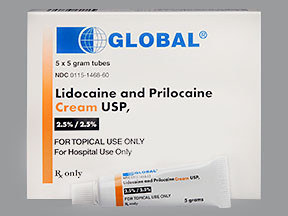

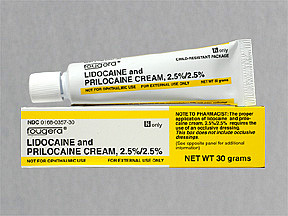

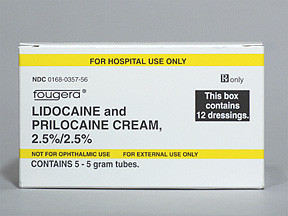
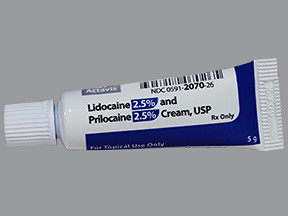
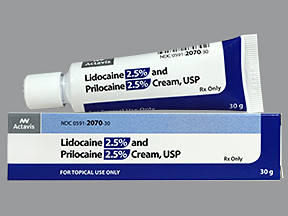
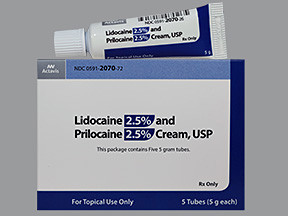
No Reviews Yet